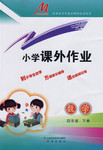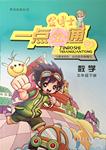题目内容
As the saying goes, roses given, fragrance in hand. I am always in the _______of giving money to every beggar or homeless person I pass by. My friends say it is not good to _______. We may come across beggars or homeless people begging every day and all beggars have their ability to survive. It _______ them that I never listen.
On a _________day, my friend and I were walking to the _______ when I passed a beggar lady. I had seen her several times before and had always given her a few _______. That day, I gave her 2 Euros. I was waiting for the bus and reading a book when I _______ to see that lady standing in front of me. She _______ me a piece of paper covered in a plastic bag to prevent it from getting _______. She stood there, looking at me ________. Putting away my book, I took the paper, which ________ she and her family had to ________ their country because of floods, and she was ________ to support them. She had got a bit of money, but she needed five ________ Euros to get home. I ________ in my pockets and found 20 cents. My friend ________a 5 Euro note. I asked her to give it to the lady, and said that I would ________ the next day. When she got the money, the lady hugged us and said thanks again and again, and went on her way. Later on the bus, I wondered where her home was and ________she had gotten to this country. In her story, I felt that my friend and I would always remain part of it as the ________, who helped her get home on a rainy day. But for me, helping a stranger did bring me happiness, giving me a pleasant ________.
1.A. time B. habit C. trend D. way
2.A. evaluate B. expose C. encourage D. envy
3.A. delights B. attracts C. interests D. annoys
4.A. rainy B. dry C. sunny D. cloudy
5.A. airport B. downtown C. railway station D. bus stop
6.A. cents B. suggestions C. books D. roses
7.A. turned around B. looked down C. looked up D. stood up
8.A. asked B. handed C. bargained D. begged
9.A. lost B. burnt C. wet D. dirty
10.A. eagerly B. clumsily C. cheerfully D. silly
11.A. said B. spoke C. wrote D. told
12.A. miss B. blame C. support D. leave
13.A. hesitating B. exploring C. struggling D. searching
14.A. many B. much C. another D. more
15.A. touched B. fished C. watched D. looked
16.A. took out B. gave out C. handed in D. made out
17.A. take back B. pay back C. come back D. get back
18.A. why B. how C. where D. whether
19.A. lookers-on B. passers-by C. foreigners D. strangers
20.A. situation B. spirit C. mood D. position
 小学课堂作业系列答案
小学课堂作业系列答案 金博士一点全通系列答案
金博士一点全通系列答案If you can find a tree which has been cut down,you will see many rings,or circles,on the base of the trunk.By learning to read these rings,you can find out about the tree's life.
The number of rings tells you how old the tree is.Each year,new wood is formed on the outside of the tree.This new wood is light in color when the tree is growing in spring and summer,and dark in winter when the tree is not growing much.So,if you count the rings of dark?or?light colored wood,you can often find out how old the tree is.
You can also tell which years have been good years and which years have been bad years.When the light?colored rings are very wide,it means that the tree has been growing quickly that year.If the rings are narrow,it has been growing slowly.If the rings on a tree trunk were greatly magnified,you would be able to see why the rings are light?colored when the tree is growing quickly and dark?colored when the tree is growing slowly.The tree trunk is made up of microscopic tubes,like some pipes,carrying water from the soil,through the trunk,and up to the leaves.They are wide and thin?walled when the tree is growing quickly and they are carrying a lot of water.They are narrow and stuck together when the tree is not growing so quickly.
When a tree is old,the tubes in the centre of the tree don't carry water.The walls of the tubes have become thick with materials which have stuck along them over the years,forming a kind of wood called“heartwood”.This kind of wood is darker in color than the young,growing wood on the outside of the tree.
You don't very often see whole tree trunks which have been cut across.But once you learn to read a cross section of the wood,you can see much more in wood which has been used to make boxes,houses and other things.
In most wood,instead of seeing the trunk cut across,you are seeing it cut along its length.Because you don't see the whole tree,you can't tell how old it is.
Title:1.of a Tree
General information | Old trees | ||
Items | Facts | Items | Facts |
Where can rings be seen | On the 2.of a trunk | The tubes in the centre of the tree | Don't carry water |
The3.of rings | Helps us know about its age | The walls of the tubes | Become 4.; Form 5. |
6.light?colored rings | Show the tree grows quickly | ||
Narrow7. rings | Mean the tree grows slowly | ||
Microscopic tubes | Function | Carry8. | |
Features | Wide and 9.when growing quickly | ||
Narrow and stuck together when growing 10. | |||

